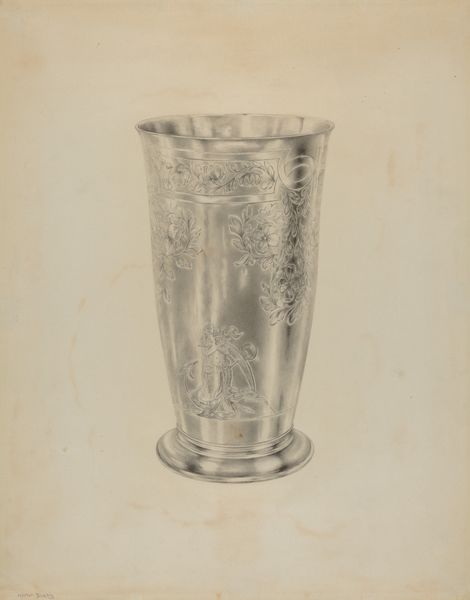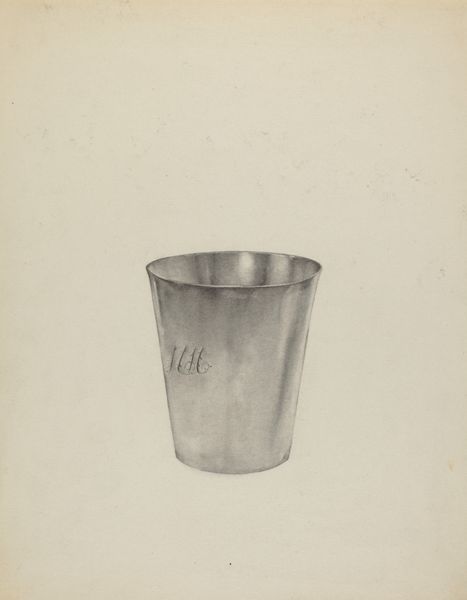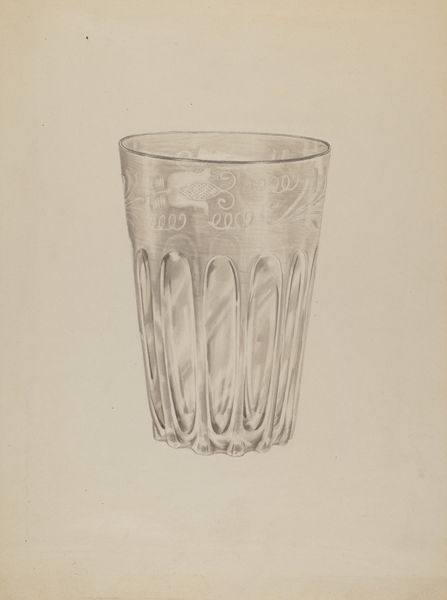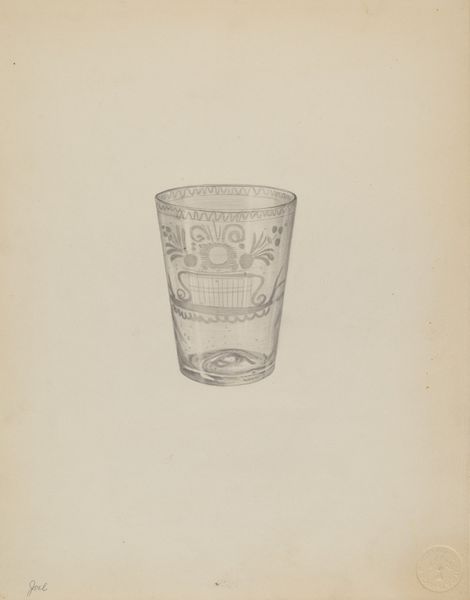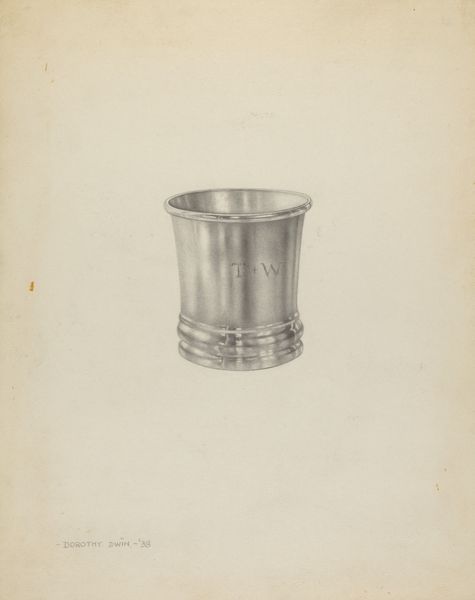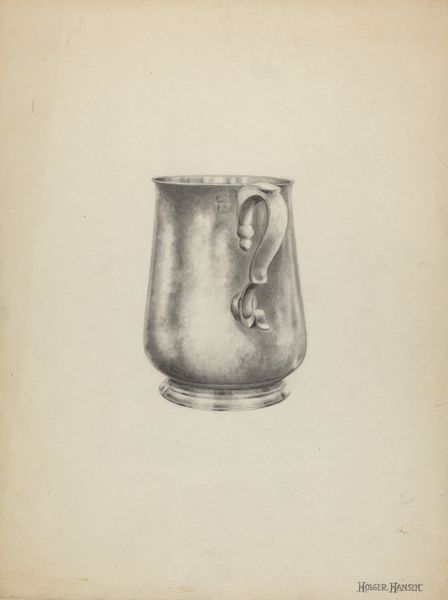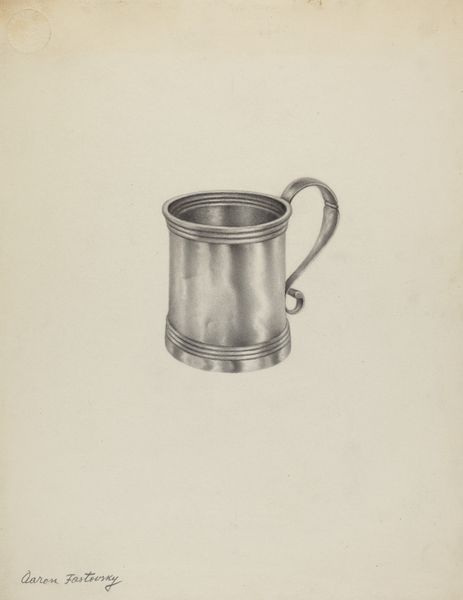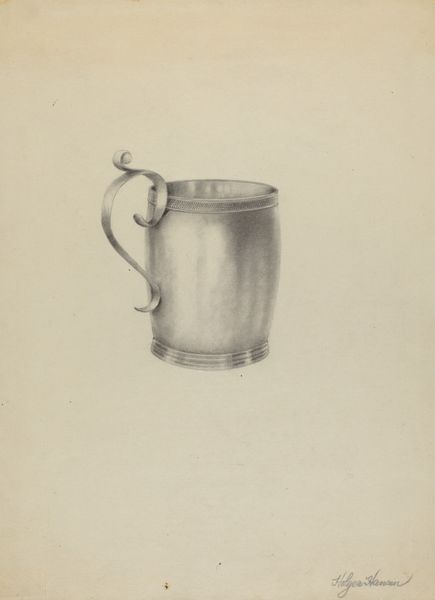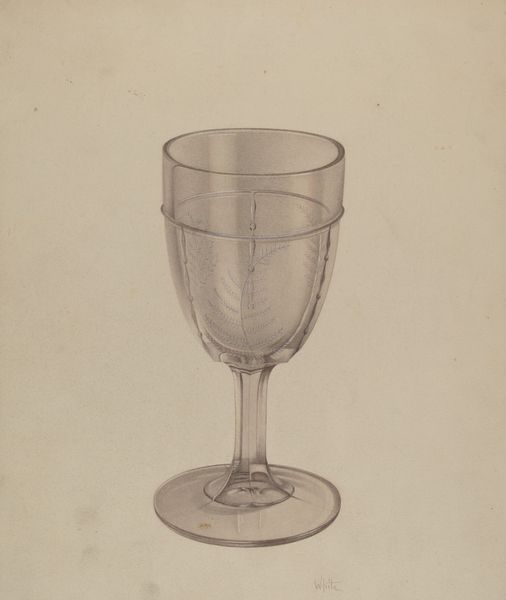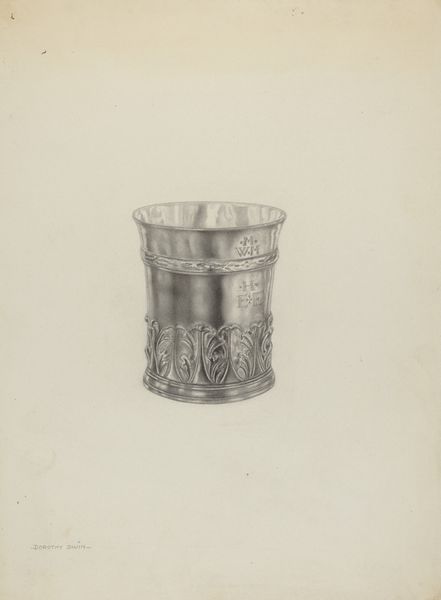
drawing, pencil
#
drawing
#
pencil drawing
#
pencil
Dimensions: overall: 28.8 x 22.6 cm (11 5/16 x 8 7/8 in.) Original IAD Object: 3 1/2" high
Copyright: National Gallery of Art: CC0 1.0
Curator: Let’s turn our attention now to Michael Fenga's "Silver Beaker," a pencil drawing from around 1938. What springs to mind for you when you look at it? Editor: Oh, it feels almost… hushed. Quiet elegance, like a memory of a well-loved object. The light seems to caress the form. I'm instantly drawn to its simple, unassuming beauty. It whispers of another time. Curator: Indeed. Think about what this object might have symbolized in 1938. Mass production was becoming more prevalent, yet handmade items still held value. This drawing may speak to class, taste, and the preservation of older traditions, but let's also ask whose traditions are being preserved and remembered? Editor: Ah, interesting! I see what you mean. It's not just a beaker, it's a signifier. Those engraved initials… who were they? What stories did they hold? Were they powerful figures whose influence has faded into history? It does prompt these reflections about what—and who—gets remembered, doesn't it? It almost makes me want to start a detective novel… a very quiet, silver-toned one! Curator: Exactly. Consider, too, that Fenga, though trained as an artist, worked in commercial art, rendering objects for others to consume. Perhaps this detailed drawing of a silver beaker is also a quiet commentary on labor, on artistic skill serving capitalist desires. How is value created, assigned, and consumed? Editor: That is a perspective I hadn’t considered at first glance! It goes to show that sometimes, even the most still-life of objects has something to shout about, if we lean in close enough to hear it. But I still come back to this initial sense of tenderness—maybe my inner romantic is just too strong. What do you make of the very deliberate choice to draw it, rather than, say, paint it? The pencil almost adds to the softness, doesn't it? Curator: Precisely. That use of pencil lends it a quality of almost understated grace, maybe implying intimacy and care, inviting us to consider ideas of value and authenticity in both art and life more widely. It highlights not only the art of representation, but of preservation, too. Editor: A tender ghost of value… I love that thought! Well, thanks for expanding how I see this, and really making it speak. Curator: My pleasure. I will also leave it to our listeners to wonder what drink they would fill the beaker with if they were given a chance?
Comments
No comments
Be the first to comment and join the conversation on the ultimate creative platform.

